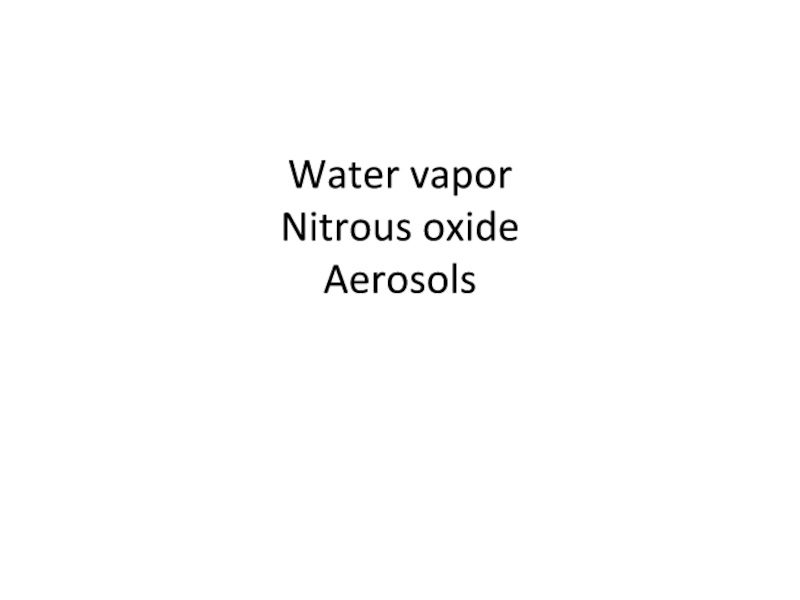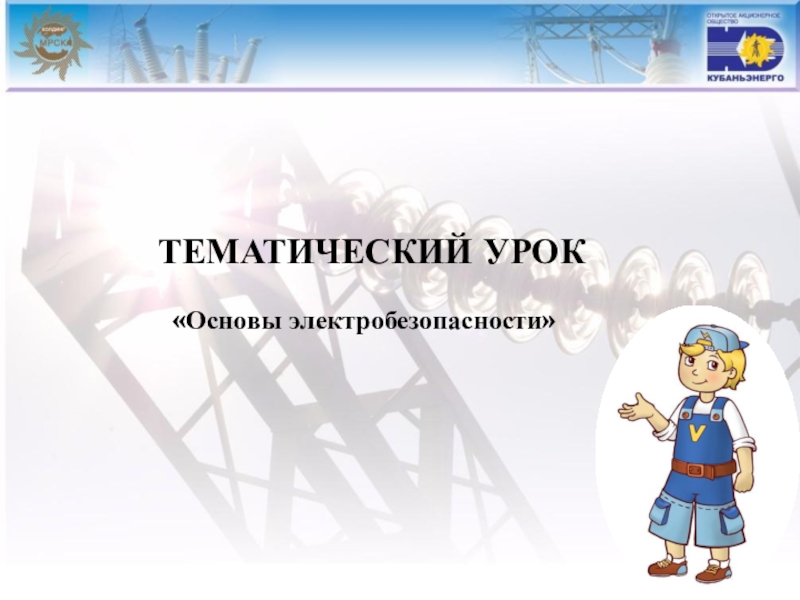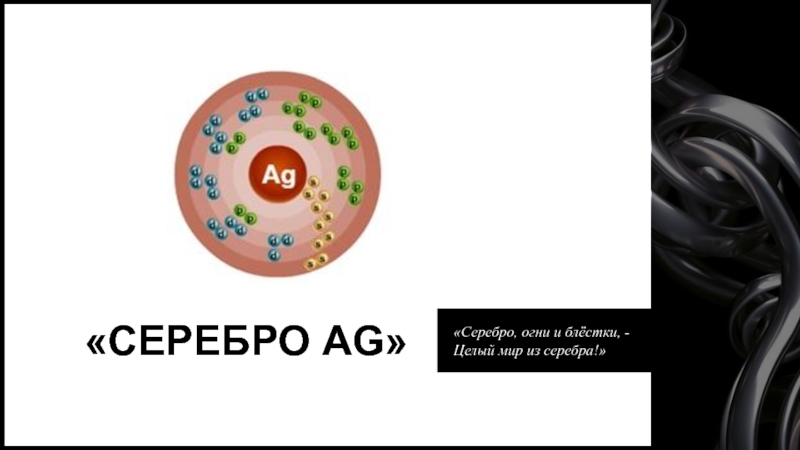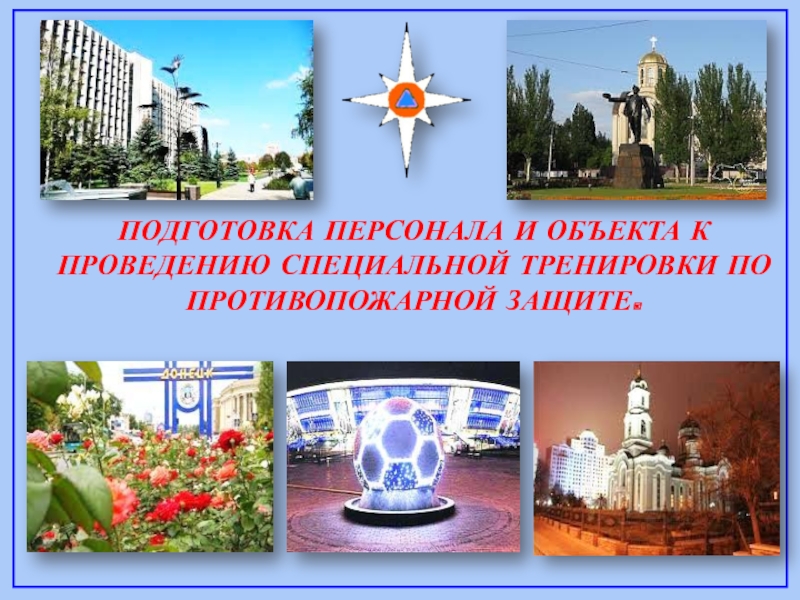Разделы презентаций
- Разное
- Английский язык
- Астрономия
- Алгебра
- Биология
- География
- Геометрия
- Детские презентации
- Информатика
- История
- Литература
- Математика
- Медицина
- Менеджмент
- Музыка
- МХК
- Немецкий язык
- ОБЖ
- Обществознание
- Окружающий мир
- Педагогика
- Русский язык
- Технология
- Физика
- Философия
- Химия
- Шаблоны, картинки для презентаций
- Экология
- Экономика
- Юриспруденция
Water vapor Nitrous oxide Aerosols
Содержание
- 1. Water vapor Nitrous oxide Aerosols
- 2. Structure of the AtmosphereThermosphereMesosphereOzone MaximumStratosphereTroposphereTemperature
- 3. Electromagnetic Spectrumincomingoutgoing
- 4. 1. Shorter, highEnergy wavelengths Hit the earthsSurface2. Incoming energy Is converted to heat
- 5. 3. Longer, infraredWavelengths hitGreenhouse gasMolecules in theatmosphere4. Greenhouse gasMolecules in theAtmosphere emitInfrared radiationBack towards earth
- 6. 78% nitrogen20.6% oxygen< 1% argon0.4% water vapor0.036%
- 7. Absorption Spectra of Atmospheric GasesAnthes, p. 55 CH4CO2N2OH2OO2 & O3 atmosphereWAVELENGTH (micrometers)InfraredVisibleUV
- 8. Greenhouse gases absorb infrared radiation and prevent
- 9. Climate Change - Greenhouse GasesTo be
- 10. Earth’s Atmospheric GasesNon- GreenhouseGases99%GreenhouseGases 1%
- 11. Greenhouse GasesCarbon DioxideWaterMethaneNitrous Oxide
- 12. Greenhouse GasesMolecules must absorb light in
- 13. - Greenhouse GasesMolecules absorbing light in
- 14. Selected Greenhouse GasesCarbon Dioxide (CO2) Source: Fossil
- 15. Greenhouse Effect & Global WarmingThe “greenhouse effect”
- 16. Global Energy Redistribution
- 17. Radiation is not evenly distributed over theSurface
- 18. The climate engine IISince earth does rotate,
- 19. Atmospheric Pressure Decreases With Height Most
- 20. Cloud effectsLow clouds over oceanmore clouds reflect
- 21. Fig. 19-10, p. 513
- 22. - Greenhouse GasesH2O as a greenhouse
- 23. The sun plays a key role in
- 24. Water vapor is one of the most
- 25. Nitrogen (N) is an essential component of
- 26. Nitrogen’s triple bondAlthough the majority of the
- 27. Слайд 27
- 28. Слайд 28
- 29. Forms of NitrogenUrea CO(NH2)2Ammonia NH3
- 30. How can we use N2?In order for
- 31. Nitrogen Fixation (N2 --> NH3 or NH4+)ENVIRONMENTAL
- 32. Nitrogen FixationR-NH2NH4NO2NO3NO2NON2ON2
- 33. Nitrogen Fixation N2 --> NH3 or NH4+How?
- 34. Ammonification or MineralizationR-NH2NH4NO2NO3NO2NON2ON2
- 35. Nitrogen Mineralization also called Ammonification Organic N
- 36. NitrificationR-NH2NH4NO2NO3NO2NON2ON2
- 37. Nitrification NH3 or NH4+ --> NO2-
- 38. DenitrificationR-NH2NH4NO2NO3NO2NON2ON2
- 39. Denitrification NO3- --> N2(Denitrifying) Bacteria do it.Denitrification
- 40. DenitrificationRemoves a limiting nutrient from the environment4NO3-
- 41. Слайд 41
- 42. Nitrous oxide N2ONitrous oxide, commonly known as laughing
- 43. N2O/O2 sedationIt is necessary to use oxygen
- 44. Nitrous oxide can be used as an oxidizer in
- 45. The gas is approved for use as
- 46. Of the entire anthropogenic N2O emission (5.7 teragrams N2O-N per year),
- 47. Cumulative effectRecent experiments show that interaction between water vapor, N2O and cosmic radiation increases cloud production.
- 48. - Other Effects on ClimateTropospheric OzoneAnthropogenic
- 49. - Other Effects on ClimateAerosol Effects
- 50. - Other Effects on ClimateAerosol Effects
- 51. - Other Effects on ClimateIndirect Effect
- 52. Climate Change - Other Effects on
- 53. Aerosol and soot pollutantsCan enhance or counteract
- 54. Слайд 54
- 55. Feedback EffectThe climate system is very complicated.
- 56. An example of positive feedbackWhen the climate
- 57. An example of negative feedbackConsider a clear
- 58. Скачать презентанцию
Слайды и текст этой презентации
Слайд 2Structure of the Atmosphere
Thermosphere
Mesosphere
Ozone Maximum
Stratosphere
Troposphere
Temperature
Слайд 41. Shorter, high
Energy wavelengths
Hit the earths
Surface
2. Incoming energy
Is
converted to heat
Слайд 53. Longer, infrared
Wavelengths hit
Greenhouse gas
Molecules in the
atmosphere
4. Greenhouse gas
Molecules in
the
Atmosphere emit
Infrared radiation
Back towards earth
Слайд 678% nitrogen
20.6% oxygen
< 1% argon
0.4% water vapor
0.036% carbon dioxide
traces
gases:
Ne, He, Kr, H, O3
Methane, Nitrous Oxide
Слайд 7Absorption Spectra of Atmospheric Gases
Anthes, p. 55
CH4
CO2
N2O
H2O
O2 & O3
atmosphere
WAVELENGTH (micrometers)
Infrared
Visible
UV
Слайд 8Greenhouse gases absorb infrared radiation and prevent it from escaping
to space.
Carbon dioxide, methane, and nitrous oxide are very good
at capturing energy at wavelengths that other compounds missСлайд 9Climate Change
- Greenhouse Gases
To be an effective greenhouse gas,
a molecule must:
- absorb light in the infrared region (must
have dipole moment for vibration mode)- 3 modes of vibration for CO2 shown
O=C=O
O=C=O
O=C=O
Symmetric vibration not allowed
Слайд 12 Greenhouse Gases
Molecules must absorb light in the right regions
-
roughly 7 to 25 μm region
- however, in some regions
(5 to 7 and 13 to 17 μm), essential no light from surface makes it to space due to current gases present- for this reason, CO2 is less effective as a greenhouse gas (at least for additional CO2)
Слайд 13 - Greenhouse Gases
Molecules absorbing light in the “IR window”
regions are more effective
Additional CO2 is not as effective as
additional N2O (absorbs at 7.5 to 9 μm) on a forcing per ppm basisFrom Girard (old text)
Слайд 14Selected Greenhouse Gases
Carbon Dioxide (CO2)
Source: Fossil fuel burning, deforestation
Anthropogenic increase: 30%
Average atmospheric residence time: 200 years
Methane (CH4)
Source:
Rice cultivation, cattle & sheep ranching, decay from landfills, mining Anthropogenic increase: 145%
Average atmospheric residence time: 7-10 years
Nitrous oxide (N2O)
Source: Industry and agriculture (fertilizers)
Anthropogenic increase: 15%
Average atmospheric residence time: 140-190 years
Слайд 15Greenhouse Effect & Global Warming
The “greenhouse effect” & global warming
are not the same thing.
Global warming refers to a
rise in the temperature of the surface of the earth An increase in the concentration of greenhouse gases leads to an increase in the the magnitude of the greenhouse effect. (Called enhanced greenhouse effect)
This results in global warming
Слайд 17Radiation is not evenly distributed over the
Surface of the earth.
The northern latitudes have an energy deficit and the low
latitude/ equator has an excess. But the low latitudes don’t indefinitely get hotter and the northern latitudes don’t get colder.Why?
The atmosphere and ocean transfer energy from low
latitudes to high
Слайд 18The climate engine II
Since earth does rotate, air packets do
not follow longitude lines (Coriolis effect)
Speed of rotation highest at
equatorWinds travelling polewards get a bigger and bigger westerly speed (jet streams)
Air becomes unstable
Waves develop in the westerly flow (low pressure systems over Northern Europe)
Mixes warm tropical air with cold polar air
Net transport of heat polewards
Слайд 19Atmospheric Pressure Decreases With Height Most of the energy is captured
close to the surface
That energy drives climate and weather
50 percent
of mass of the atmosphere is within 6 km of the surfaceСлайд 20Cloud effects
Low clouds over ocean
more clouds reflect heat (cooling)
fewer clouds
trap heat (warming)
High clouds
more clouds trap heat (warming)
high: 5-14 km;
low < 2kmСлайд 22 - Greenhouse Gases
H2O as a greenhouse gas
- the molecule
responsible for the most greenhouse effect heating
- the third most
prevalent molecule in the atmosphere (on average, but composition is variable)- direct anthropogenic sources are insignificant (at least outside of deserts and the stratosphere)
- also responsible for cooling through increasing albedo (in clouds) so normally kept separate from other greenhouse gases
- water vapor is important indirectly as planet heating increases water vapor (this is covered under feedbacks)
Слайд 23The sun plays a key role in the earth’s temperature
Researchers
think that atmospheric warming is not due to an increase
in energy output from the sunSince 1975
Troposphere has warmed
Stratosphere has cooled
Warmer temperatures create more clouds
Thick, low altitude cumulus clouds – decrease surface temperature
Thin, cirrus clouds at high altitudes – increase surface temperature
Слайд 24Water vapor is one of the most important elements of
the climate system. A greenhouse gas, like carbon dioxide, it
represents around 80 percent of total greenhouse gas mass in the atmosphere and 90 percent of greenhouse gas volume.Water vapor and clouds account for 66 to 85 percent of the greenhouse effect, compared to a range of 9 to 26 percent for CO2. So why all the attention on carbon dioxide and its ilk? Is water vapor the real culprit causing global warming?
The answer is that water vapor is indeed responsible for a major portion of Earth’s warming over the past century and for projected future warming. However, water vapor is not the cause of this warming. This is a critical, if subtle, distinction between the role of greenhouse gases as either forcings or feedbacks. In this case, anthropogenic emissions of CO2, methane, and other gases are warming the Earth. This rising average temperature increases evaporation rates and atmospheric water vapor concentrations. Those, in turn, result in additional warming.
Слайд 25Nitrogen (N) is an essential component of DNA, RNA, and
proteins, the building blocks of life.
All organisms require nitrogen
to live and grow. The majority (78%) of the Earth’s atmosphere is N2.
Nitrogen
Слайд 26Nitrogen’s triple bond
Although the majority of the air we breathe
is N2, most of the nitrogen in the atmosphere is
unavailable for use by organisms.This is because the strong triple bond between the N atoms in N2 molecules makes it relatively inert (like a noble gas).
Слайд 29Forms of Nitrogen
Urea CO(NH2)2
Ammonia NH3 (gaseous)
Ammonium NH4
Nitrate
NO3
Nitrite NO2
Atmospheric Dinitrogen N2
Organic N
Слайд 30How can we use N2?
In order for plants and animals
to be able to use nitrogen, N2 gas must first
be converted to more a chemically available form such as ammonium (NH4+) or nitrate (NO3-).WE CAN’T!
But BACTERIA & … can…
Слайд 31Nitrogen Fixation (N2 --> NH3 or NH4+)
ENVIRONMENTAL
High-energy natural events
which break the bond N2
Examples:
lightning
forest fires
hot lava flows
Слайд 33Nitrogen Fixation N2 --> NH3 or NH4+
How?
HUMAN IMPACT
Burning fossil
fuels,
using synthetic nitrogen fertilizers,
and cultivation of legumes
all
fix nitrogen. Слайд 35Nitrogen Mineralization
also called Ammonification
Organic N --> NH4+
Decay of dead things,
manure, etc.
Done by decomposers (bacteria, fungi, etc.)
During this
process, a significant amount of the nitrogen contained within the dead organism is converted to ammonium (NH4+).Слайд 37Nitrification
NH3 or NH4+ --> NO2- --> NO3-
(Nitrifying) Bacteria
add oxygen to nitrogen in two steps:
STEP 1:
Bacteria take
in NH3 or NH4+ & make NO2- = nitrite
Step 2:
Bacteria take in NO2- & make NO3- = nitrate
Слайд 39Denitrification
NO3- --> N2
(Denitrifying) Bacteria do it.
Denitrification removes nitrogen from ecosystems,
and converts it back to atmospheric N2.
Слайд 40Denitrification
Removes a limiting nutrient from the environment
4NO3- + C6H12O6 2N2
+ 6 H20
Inhibited by O2
Not inhibited by ammonia
Microbial reaction
Nitrate is
the terminal electron acceptorСлайд 42Nitrous oxide N2O
Nitrous oxide, commonly known as laughing gas, nitrous, nitro, or NOS is a chemical
compound with the formula N2O.
At room temperature, it is a colorless, odorless non-flammable gas,
with a slightly sweet taste.It is used in surgeryand dentistry for its anaesthetic and analgesic effects.
It is known as "laughing gas" due to the euphoric effects of inhaling it, a property that has led to its recreational use as a dissociative anaesthetic.
It is also used as an oxidizer in rocket propellants, and in motor racing to increase the power output of engines.
At elevated temperatures, nitrous oxide is a powerful oxidizer similar to molecular oxygen.
Nitrous oxide gives rise to nitric oxide (NO) on reaction with oxygen atoms, and this NO in turn reacts with ozone.
As a result, it is the main naturally occurring regulator of stratospheric ozone.
Слайд 43N2O/O2 sedation
It is necessary to use oxygen with nitrous oxide
so that the blood remains appropriately oxygenated.
A mixture of 20%
nitrous oxide and 80% oxygen has the same analgesic equipotence as 15 mg of morphine.Слайд 44Nitrous oxide can be used as an oxidizer in a rocket motor
In vehicle racing, nitrous
oxide (often referred to as just "nitrous") allows the engine
to burn more fuel by providing more oxygen than air alone, resulting in a more powerful combustion. The gas itself is not flammable at a low pressure/temperature, but it delivers more oxygen than atmospheric air by breaking down at elevated temperatures. Therefore, it is often mixed with another fuel that is easier to deflagrate.Слайд 45The gas is approved for use as a food additive (also known
as E942), specifically as an aerosol spray propellant. Its most common
uses in this context are in aerosol whipped cream canisters, cooking sprays, and as an inert gas used to displace oxygen, to inhibit bacterial growth, when filling packages of potato chips and other similar snack foods.Слайд 46Of the entire anthropogenic N2O emission (5.7 teragrams N2O-N per year),
agricultural soils provide
3.5 teragrams N2O–N per year.
Nitrous oxide is produced naturally in the
soil during the microbial processes of nitrification, denitrification, nitrifier denitrification and others.The production of adipic acid is the largest source to nitrous oxide. It specifically arises from the degradation of the nitrolic acid intermediate derived from nitration of cyclohexanone.
Слайд 47Cumulative effect
Recent experiments show that interaction between water vapor, N2O
and cosmic radiation increases cloud production.
Слайд 48 - Other Effects on Climate
Tropospheric Ozone
Anthropogenic emissions have lead
to increase
Increases are heterogeneous, plus hard to determine pre-industrial concentrations
Stratospheric
OzoneLoss in Stratosphere leads to cooling (more loss of energy out to space)
However, loss of stratospheric ozone also leads to greater UV absorption (and heating) in troposphere
As ozone loss is reversed, some heating may occur
Слайд 49 - Other Effects on Climate
Aerosol Effects – Light Scattering
Aerosol
As was discussed previously in visibility, aerosol particles of diameter
0.2 to 1 mm is very efficient in scattering lightA significant fraction is scattered in the backwards direction, so this effectively increases planetary albedo
Increase in albedo leads to cooling
Notice how smoke from Star fire is whiter vs. forest background
Слайд 50 - Other Effects on Climate
Aerosol Effects – Light Absorption
Most
aerosol constituents do not absorb significantly in the visible region
(where light is most prevalent)A big exception is soot (elemental carbon emitted in inefficient combustion)
Soot clouds lead to atmospheric warming (even if cooling the surface over short-term)
Notice how smoke from Kuwait oil fires is black vs. desert background
http://www.lpi.usra.edu/publications/slidesets/humanimprints/slide_16.html
Слайд 51 - Other Effects on Climate
Indirect Effect of Aerosols
One type
is through modification of cloud reflectivity
Clean Case:
fewer but larger droplets
Polluted
Case:more but smaller droplets
Слайд 52Climate Change
- Other Effects on Climate
Indirect Effect of Aerosols
Larger
droplets reflect light more poorly per g of cloud water
Polluted
clouds look whiter from spaceSource: http//www-das.uwyo.edu/~geerts/cwx/notes/chap08/contrail.html
Ship tracks are indicative of localized pollution
Most apparent where: clouds are normally clean and with thin clouds (thick clouds have high albedos regardless)
Слайд 53Aerosol and soot pollutants
Can enhance or counteract projected global warming
Sulfate
particles reflect sunlight
Soot particles absorb sunlight
Outdoor Air Pollution Can Temporarily
Slow Atmospheric WarmingСлайд 55Feedback Effect
The climate system is very complicated. A change in
one component of the system may cause changes in other
components. Sometimes the changes in other components enhance the initial change, then we say that these changes have positive feedback to the system. If the changes result in the reduction of the original change, then they have negative feedback.Both positive and negative feedback processes may exist in the climate system. In studying the global climatic change, we cannot make conclusions based on intuition, but have to take all such possible complicated effects into account. A good climate model would have treated all of them realistically.












































































